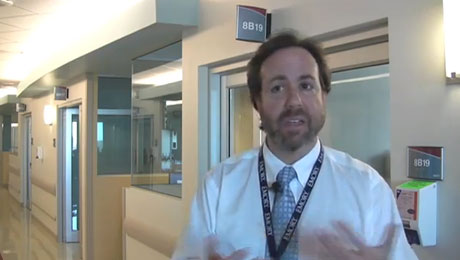News
Monday, March 11th, 2013

STROKEAHA: February 28, 2013 Background and Purpose—An individualized risk score for the development of stroke may be a useful tool to motivate patients to modify their risk behaviors. We developed and validated a point-based prediction model (risk score) for stroke incidence using a Japanese cohort of general men and women. Methods—The Japan Public Health Center-based prospective […]
News
Monday, March 11th, 2013
STROKEAHA: February 28, 2013 Background and Purpose—Elevated blood pressure (BP) is associated with the presence of cerebral microbleeds (CMBs) in cross-sectional studies. However, longitudinal studies did not show a convincing relationship. We aimed to determine the association between elevated BP levels and the occurrence of new CMBs after a 2-year follow-up in first-ever lacunar stroke patients […]
News
Monday, March 11th, 2013
STROKEAHA: February 28, 2013 Background and Purpose—The accuracy of diffusion-weighted imaging (DWI) for the diagnosis of acute cerebral ischemia among patients with suspected ischemic stroke arriving to an emergency room has not been studied in depth. Methods—DWI was performed in 712 patients with acute or subacute focal symptoms that suggested an acute ischemic stroke (AIS), 609 […]
News
Monday, March 11th, 2013
STROKEAHA: February 28, 2013 Background and Purpose—Coronary artery calcification (CAC) is a noninvasive marker of plaque load that predicts myocardial infarcts in the general population. Herein, we investigated whether CAC predicts stroke events in addition to established risk factors that are part of the Framingham risk score. Methods—A total of 4180 subjects from the population-based Heinz […]
News
Wednesday, March 6th, 2013

STROKEAHA: February 26, 2013 Background and Purpose—Inflammation may contribute to cognitive impairment after stroke. Inflammatory markers are associated with hippocampal atrophy. We tested whether markers of inflammation, erythrocyte sedimentation rate (ESR), and serum levels of C-reactive protein are associated with reduced hippocampal volume and poor cognitive performance among stroke survivors. Methods—We analyzed 368 consecutive cases from […]
News
Wednesday, March 6th, 2013
STROKEAHA: February 26, 2013 Background and Purpose—Quantification of stroke severity through telemedicine consultation is challenging and relies on professional support at the patient’s bedside. We aimed to develop a novel scale for assessing stroke severity through telemedicine without assistance from a third party (Unassisted TeleStroke Scale [UTSS]). Methods—Stroke severity was assessed in 45 patients with suspicion […]
News
Wednesday, March 6th, 2013
STROKEAHA: February 5, 2013 The incidence of stroke has surpassed 800 000 cases each year, and acute stroke has become the leading cause of disability in the United States. Given that a person’s chronological age is a primary risk factor,1 and the United States will be experiencing exponential growth in the elderly population over the next 20 […]
News
Wednesday, March 6th, 2013
STROKEAHA: January 29, 2013 Background and Purpose—Procedures requiring specific skill sets often have been shown to depend on institutional volume, that is, centers receiving a higher volume observe better outcomes in those patients. This relationship recently has been shown to exist for subarachnoid hemorrhage(SAH) patients in a large study in the United States. We aim to […]
News
Wednesday, March 6th, 2013
STROKEAHA: January 22, 2013 Background and Purpose—The ABCD2 score is increasingly used for risk stratification of transient ischemic attack patients. We sought to determine the reliability and convergent validity of retrospective ABCD2 score estimation from medical records. Methods—We compared ABCD2 scores that were prospectively determined by a vascular neurology attending to scores determined retrospectively from medical record review. Emergency […]
News
Tuesday, February 26th, 2013

STROKEAHA: February 19, 2013 Background and Purpose—Guidelines recommend carotid endarterectomy (CEA) within 2 weeks from an ischemic event. However, previous studies have shown that only a minority of patients undergo CEA within this period. The aim of this study was to examine the effect of a multidisciplinary nationwide initiative aimed at reducing time to CEA after […]































